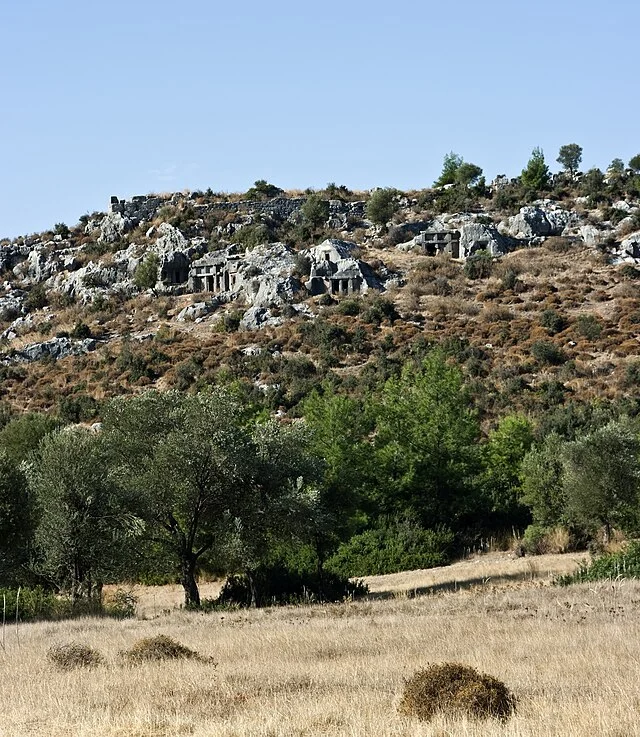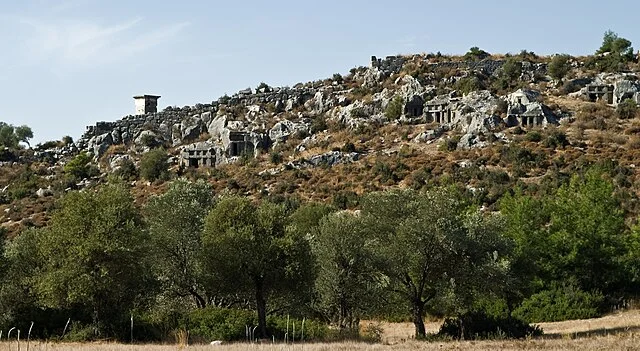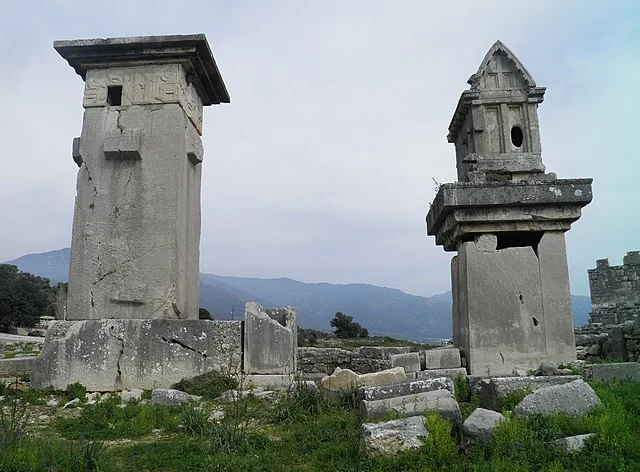The Lycian tombs in Xanthos are among the most significant archaeological features of ancient Lycia, a region in modern-day southwestern Turkey. These tombs reflect the rich funerary practices of the Lycian people, known for their elaborate burial traditions, which often included monumental structures. Xanthos, once the capital of the Lycian Federation, holds a concentration of these tombs, offering crucial insights into the region’s culture and history.
Get your dose of History via Email
Historical Background

Xanthos was an important city in ancient Lycia, situated along the Xanthos River. The city flourished from the 5th to 1st century BC, and its tombs date primarily from this period. Lycian tombs combine architectural features from both indigenous and foreign influences, particularly Greek and Persian styles. The tombs reflect the diverse and complex society that once inhabited the area.
Types of Lycian Tombs

The Lycian tombs are divided into several types, each with unique architectural characteristics. These include rock-cut tombs, sarcophagi, and monumental tomb structures.
- Rock-Cut Tombs
The most distinctive feature of Lycian tombs is their rock-cut construction. These tombs were carved into the cliffs surrounding Xanthos. They often resemble small houses or temples with detailed facades. These structures served as both burial places and as symbols of social status. The tombs typically contained multiple chambers for the deceased and their belongings. - Sarcophagi
The sarcophagi in Xanthos are notable for their detailed relief carvings. These stone coffins were used for elite burials and often depict scenes from daily life, mythology, or the afterlife. The reliefs demonstrate the Lycian people’s artistic skills and provide valuable insight into their beliefs and social structures. - Monumental Tombs
The most famous examples of monumental tombs in Xanthos are the Nereid Monument and the Harpy Tomb. The Nereid Monument, dating to around 390 BC, is a large tomb that features a marble frieze with high-relief depictions of mythological scenes. The Harpy Tomb, dating to the 5th century BC, is known for its striking reliefs of harpies, mythical creatures that were often depicted in Lycian art.
Burial Practices
The Lycian tombs reveal a great deal about ancient Lycian burial customs. The Lycian people practiced both cremation and inhumation, depending on the period and social status of the deceased. Wealthy individuals often had large, elaborate tombs, while commoners were buried in simpler graves.
The tombs were typically designed to accommodate multiple individuals, reflecting the Lycian practice of familial burials. Rich grave goods, including pottery, jewelry, and weapons, were often included in the tombs, suggesting the belief in an afterlife where such items were needed.
Influence of Greek and Persian Architecture

The architecture of Lycian tombs shows a blend of indigenous designs and influences from surrounding cultures. Greek architectural styles, particularly the use of columns and friezes, are evident in the facades of many tombs. Persian influence is also apparent, particularly in the use of monumental structures for royal burials.
This fusion of styles reflects the geopolitical interactions of Lycia with neighboring powers, particularly during the 5th and 4th centuries BC when Lycia was under the influence of both Persia and Greece. These interactions contributed to the distinct artistic and architectural legacy of the Lycian people.
Conclusion
The Lycian tombs in Xanthos are invaluable resources for understanding the culture, art, and beliefs of the ancient Lycians. Through their architecture, burial practices, and artistic reliefs, these tombs provide a glimpse into a civilization that thrived in Asia Minor during the first millennium BC. The diversity of tomb types and the blending of cultural influences highlight the complexity of Lycian society. Today, these tombs remain a testament to the region’s rich history and continue to draw scholars and tourists alike.
Source:
